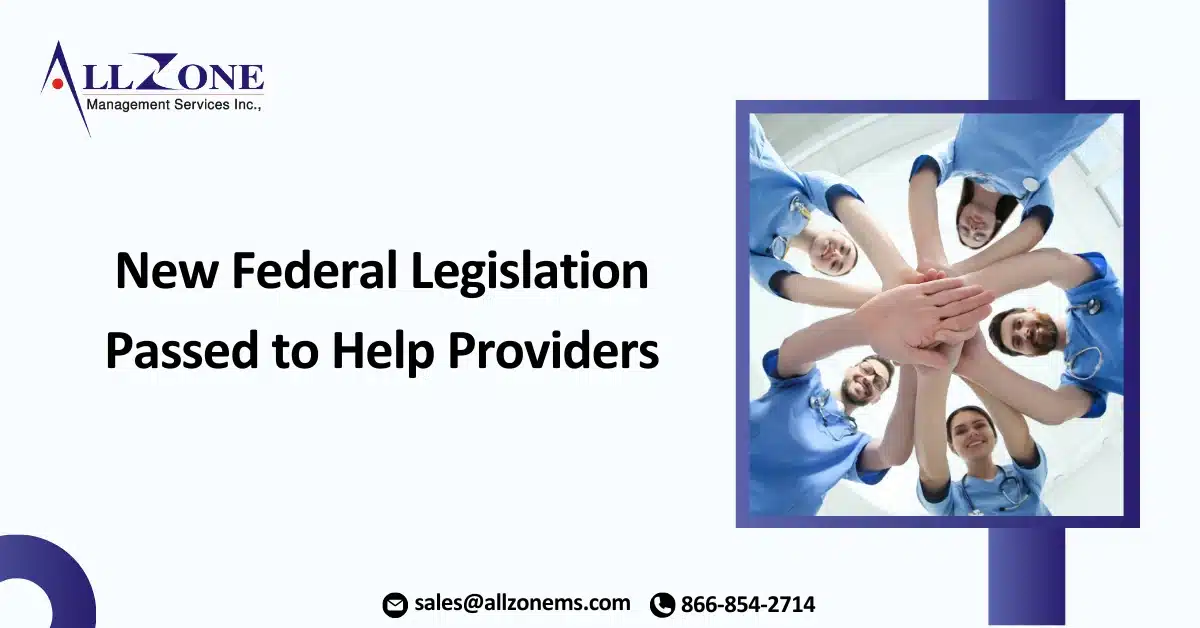The President signed the Coronavirus Aid, Relief, and Economic Security (CARES) Act on Friday, March 27, formalizing a piece of legislation meant to support and stimulate the economy in the midst of the global pandemic, to the tune of over $2 trillion. This article will address provisions of the CARES Act that will assist healthcare hospitals, physician offices, and other organizations.
The Public Health and Social Services Emergency Fund
First, the CARES Act provides funding to reimburse healthcare providers for lost revenue in situations in which a provider has given a diagnosis, testing, or care for individuals with possible or actual cases of COVID-19. Those monies are called the Public Health and Social Services Emergency Fund.
This funding can be used to cover the construction of temporary structures, leasing of properties, medical supplies and equipment, increased workforce and training, and developing or retrofitting facilities for emergency operations.
Last week, the U.S. Department of Health and Human Services (HHS) said that this funding will also be used to cover payments for uninsured patients undergoing COVID-19 treatment.
As of this writing, the government has not given specifics on how to apply for this funding, but we expect instructions to come out this week, so if you think that you might qualify, start to gather your data now on how much you might need and where you’ll need it.
The Paycheck Protection Program
There’s also funding if you’re a small provider office that has little to nothing to do with COVID-19 – say if you’re a dental office, or if your office provides mostly elective procedures. The name of this funding is the Paycheck Protection Program, through which businesses with fewer than 500 employees can apply for things like payroll and healthcare benefits for employees, mortgage or rent, and utilities, up to $10 million. The CARES act says that all or a portion of the loan may be forgiven.
The government turned on the application process for these small business loans last Friday afternoon; the Small Business Administration website – COVID-19 Small Business Guidance and Loan Resources – will point you to more details and the application process.
Many states are also developing programs and providing funds for businesses affected by COVID-19. Check out Forbes’ continually updated list here and this table by Zenefits’ Workest for state-by-state opportunities.
Coverage for COVID-19 Testing and Treatment
The Families First Coronavirus Response Act – the second COVID-19 law passed by Congress – required all health plans to cover COVID-19 testing. The Act also required that patient cost-sharing for testing should be waived by health plans. This past week, a number of national carriers came out and said that they would also cover COVID-19 treatment and that they would waive patient cost-sharing of COVID-19 treatment. These included Aetna, Anthem, Blue Cross Blue Shield (BCBS), Humana, and UnitedHealthcare, among others.
However, even as the Families First Act required health plans to waive cost-sharing for testing, and the CARES Act went further and put in some provisions on provider reimbursement for testing, neither did explicitly prohibit balance billing patients. In fact, there is no federal, national prohibition for balance billing in any of Congress’s COVID-19 legislation so far, or in any federal law.
Which begs the question: is there going to be a federal balance billing prohibition? Probably not. We heard this week that there are still vigorous discussions on Capitol Hill about including a balance bill provision in one of these COVID-19 responses, but talking to a couple of lobbyists this week, they said, yes, there were lawmakers on both sides of the aisle eager to do it, and their staffers are working the phones. However, they still say that the chances are slim. In this urgent legislative environment, there’s no time to quibble over differences while getting these stimulus bills out, and balance billing might cause some quibbling.
Congress is almost certain to have a Phase IV coronavirus law, that is, at least one more stimulus package, but there’s great uncertainty on what it will include and when it might be passed. At a minimum, another stimulus may be needed to continually fund the programs set up so far, such as the Paycheck Protection Plan described above.
For More Information: https://www.racmonitor.com/new-federal-legislation-passed-to-help-providers-navigate-crisis

